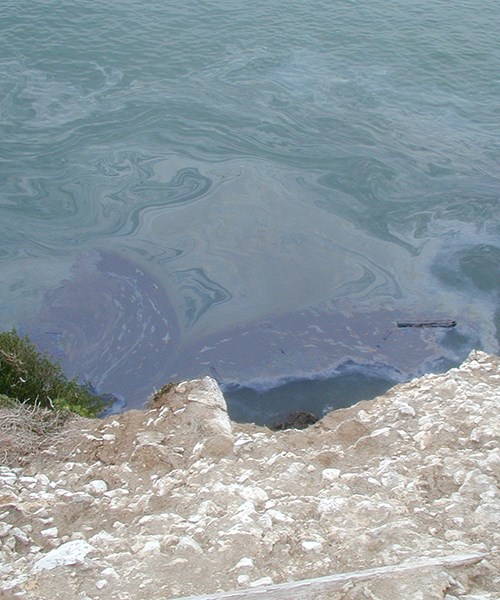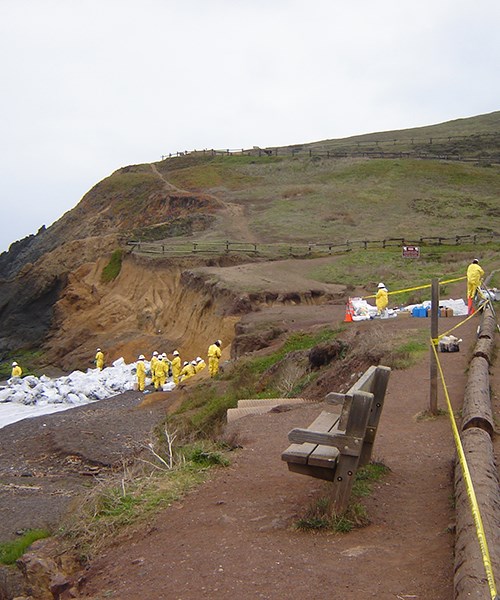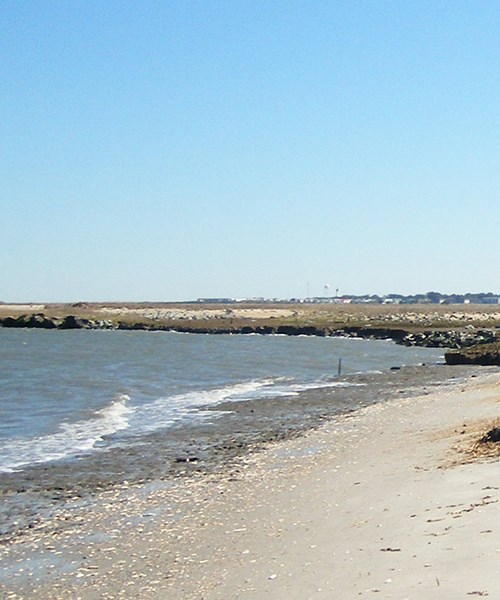There are 3 stages to the response effort: Before the clean-up, during the clean-up, and after the clean-up. Each stage requires working together with the response community (federal, state, and local governments, NGOs, and industry members) and asking a set of important questions, as discussed below. The NPS is responsible for planning, providing information and recommendations, controlling access to the park, and deciding when to open the park back up to visitors.
See an Active Spill?
Learn what to do if you see a spill...

NPS Photo
Before Clean-Up
Planning is a crucial phase to the spill response effort because it ensures that the necessary response efforts can be organized swiftly and efficiently and that communication is clear. Several park units have completed a spill response plan. Contact the NPS Spill Response Program to learn how to collaborate on pre-spill planning.
Before any sort of clean-up can occur, the NPS has to ask:
-
What is the spill material? Different types of oil require different types of clean-up
-
How much was spilled and what is the coverage of that spill?
-
Where is it expected to go? The National Oceanic and Atmospheric Administration (NOAA) monitors things like tide conditions, wind and weather patterns, and water currents to predict where the spill is going to go.
-
What are the natural and cultural resources at risk in the impacted affected area? The NPS has experts in general biological, natural, and cultural resources who provide knowledgeable recommendations to the response community on how each clean up method will impact these resources.

NPS Photo
Clean-Up
Once each of the above questions are answered, the NPS assesses each clean-up method and gives their recommendation to the response community.
Each of the possible methods below have pros and cons based on the type of oil spill and the types of resources present at site:
-
Rakes and shovels
-
In situ burning of the oil
-
Bulldozers
-
Scraping and vacuuming
-
Pom-poms- absorbent materials that soak up the oil and are then disposed of.
-
Sorbent booms- disposable booms that encircle the spill and absorb the oil.
-
Containment booms- reusable booms contain the oil which then can be skimmed or vacuumed off.
-
Do nothing- Sometimes they conclude that leaving the spill alone is best because the cure could be more harmful than the problem.

NPS Photo
After Clean-Up
The response team always checks the areas outside of the footprint of the spill to make sure the spill is contained and didn't go anywhere unexpected.
Next, the question “How clean is clean?” has to be answered in order to have a clean-up end point. "Clean" can be defined as when there are no oil sheens (very thin layer of oil on the surface of the water) coming off the surface or when there are no tarballs (clumps of thicker or solidified oil mixed with sediment and organic matter) bigger than a pea or when there is no visible oil. The answer usually depends on sensitivity of the resources at the affected area and the visitor and wildlife use of the area.
The NPS reviews and assesses the clean up methods everyday. Even after the response team leaves, the NPS continues to monitor the recovery of the resources.
Last updated: August 29, 2017
